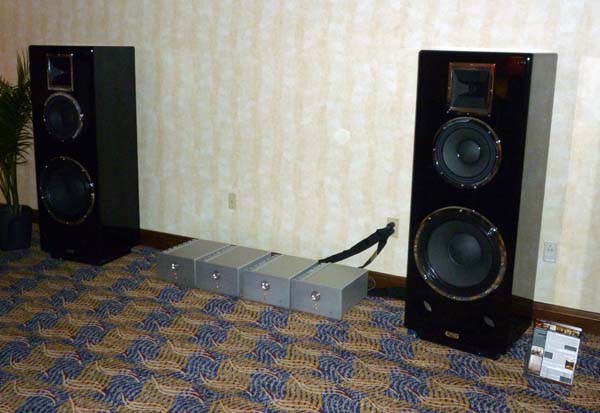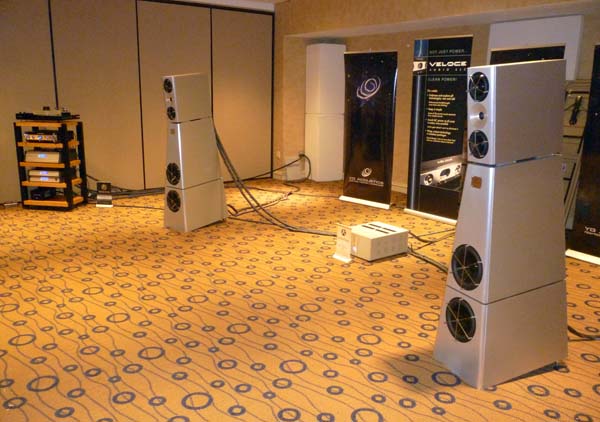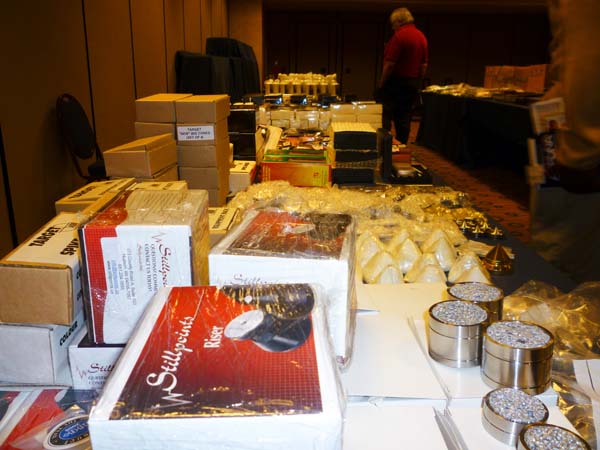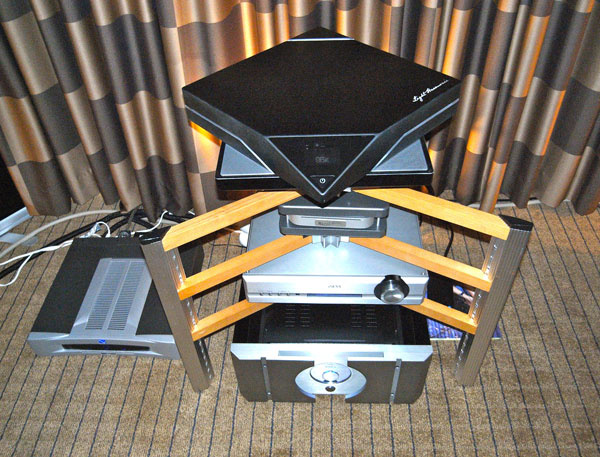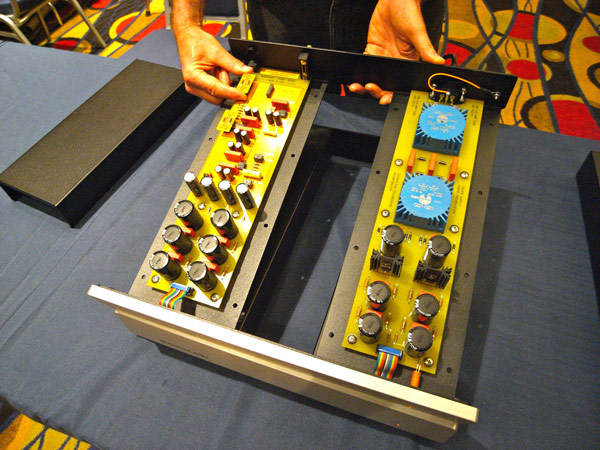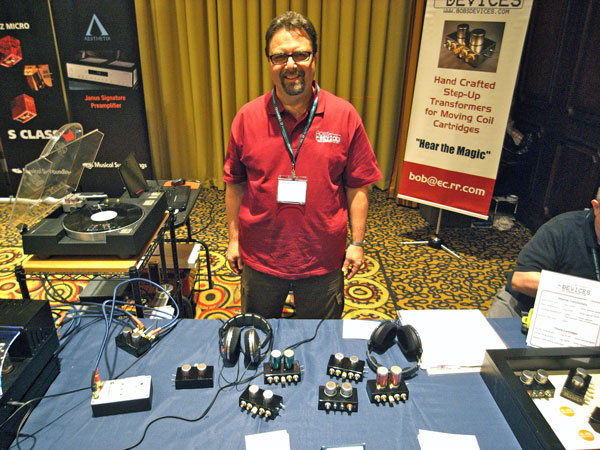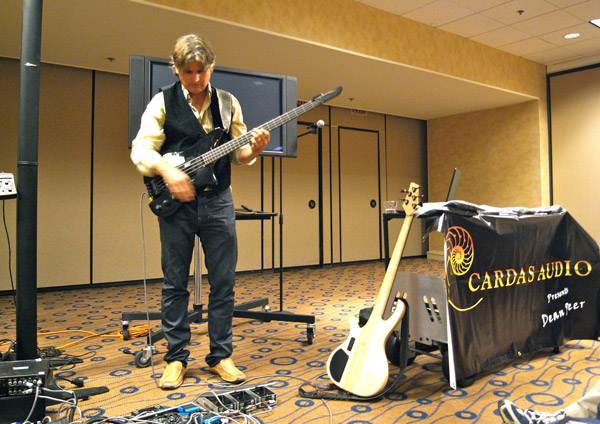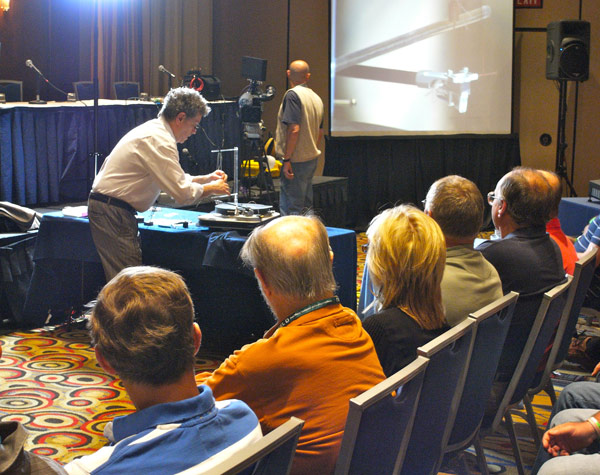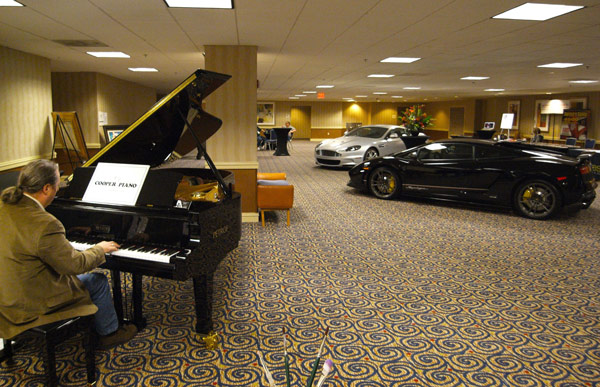LATEST ADDITIONS
The Daniel Hertz M1
As seen here, the M1 is designed to be powered by four Telikos M5 Mono Reference amplifiers ($8000 each): Each channel uses one M5 switched to frequencies above 80Hz and one M5 switched to frequencies below 80Hz. Also in the system was a Telikos M6 preamp ($10,000). The source was a $400 laptop running WAV files from iTunes.
Interesting story: Daniel Hertz (the company) takes its name from the two sides of Mark Levinson’s family. Daniel Levinson was Mark’s father, while Heinrich Hertz (1857-1894), a German physicist and the first to demonstrate the existence of electromagnetic waves, was Mark’s great uncle on his mother’s side.
The YG Acoustics Anat III Signature
Alright. As some graceful piano came slowly tinkling into the room, I was immediately struck by the system’s combination of scale and delicacy. And when the first voice came in, it was one of those holy shit moments. And when the second voice came in, it was another one of those holy shit moments. And when the two voices came together, all I could do was sit there and grin like a dummy, in awe of the texture and tone and exquisite delineation of images. And then the percussion—fast and clean and authoritative. It added up to a compelling complete performance, just as sonically impressive as it was emotionally involving.
I heard myself thinking wild thoughts: It’s incredible that reproduced music can sound this good…. Sitting there listening to Herbie Hancock’s The Imagine Project, I was having the same sort of reaction as when walking the halls of a museum or strolling down 34th Street between Fifth and Sixth Avenues, looking up at the Empire State Building: I’m just sort of amazed that humans can create such beauty.


